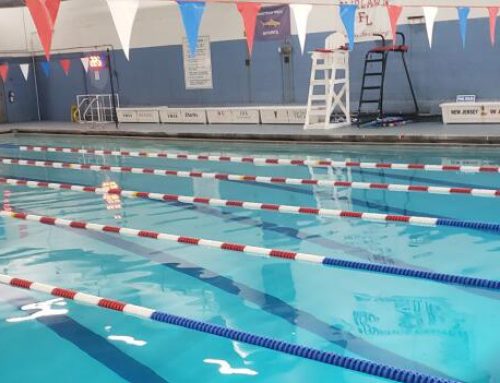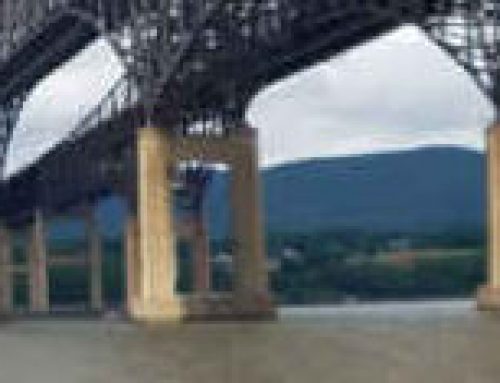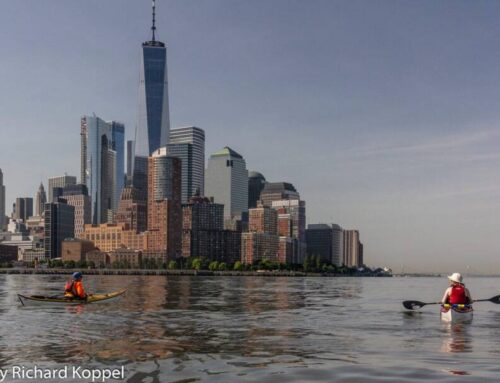One of the most common questions newer paddlers ask is: How do I get ready for the next class of river? And the most common answer they get is: Practice more difficult moves on an easier river (or, as one of my more cerebral paddling buddies says: Make class n+1 moves on a class n river).
But what does that mean? It’s hard to know what moves look like on a harder river if you haven’t been on one, but there are a few methods of practice that can’t go wrong. First and foremost: Catch eddies. Up high, close to the rock, paddling yourself across the eddyline. When you were brand new, there were likely plenty of rapids you ran that had no eddies at all. Well, guess what? They probably did after all. The first step to advancing is finding them and catching them so you can look downstream and plan your next move in a controlled way rather than just surviving a run down the middle. Now, see that eddy on the other side of the river there’s no way to get to? Find a way. How about that one that’s upstream a bit, or the one that requires a short surf across a little hole, or the one that’s intimidating even though it’s easy, because it requires a ferry above some thing scary? If you miss, find a way to recover, make a plan B on the fly, catch the next eddy and get in control again. If you alllmost get it, don’t let yourself off the hook. Pretend it’s “must make” and paddle up like mad until you’re fully in the eddy and you can catch your breath before planning your next move. On your next run, make the same moves with more grace and half as many paddle strokes.
Another option is to ask your instructor or a trusted friend who’s more advanced than you to show you some fun and challenging lines.
While you’re pushing your boat handling skills forward, you’re doing something else that is crucial to advancing, probably without realizing it: Learning how to read the river. I remember that, for me, one of my real breakthrough points early on was when I began to be able to find my own way down a rapid without help. When you paddle, keep your eye out for all the river features you heard about in your beginner classes: Downstream Vs (tongues), waves, eddies, holes, etc. Remember that, sometimes, it’s easier to identify a feature by looking a little below it and noticing what the water is doing. Try to identify features from upstream, then look as you pass by to see if you were right. If you stop to scout a rapid, try to identify features and lines before your leader gives you all the answers. Speaking of the leader, ask him or her to let you take the lead sometime when they think it’s appropriate.
You can work on your river reading even when you’re not paddling. Next time you’re up at the Deerfield, take a short hike into Dragon’s Tooth, try to spot features and lines, watch lots of paddlers run it in different ways, enjoy some carnage and discuss with your friends what they did wrong. There are lots of more difficult rivers you can hike and enjoy from the bank. You can even work on your reading with the tiniest of streams or a gutter on the side of the road. Pretend you’re tiny and all the same features are there. What do you see? Where would your line be? Realize that, if you find yourself doing this, you are probably an addict.
You’ll notice I haven’t mentioned a roll. While having a roll is something that will certainly be required later, it’s less important than all of the above in your transition from class I-II to class II-III. Of course it’s nice to stay in the boat, but a swim on a class II-III river is unlikely to cause major difficulties.
So…The next question: How do I know when I’m ready? Well, first, you’re finding those class n+1 moves are getting pretty easy. For me, I find there comes a point when a river that has terrified me for years suddenly looks like fun. It’s a bit mysterious to me, but my subconscious brain seems to have a sense of what kind of paddling I can handle. The thing that has been my most powerful compass over the years, however, is the paddling companions I have come to know and trust. As you become more experienced, you’ll find paddlers of various levels whose judgement aligns with yours and who know you well enough to help you assess your paddling skill. Of course, you are ultimately responsible for your own choices and the decision to run a harder river is highly individualized according to your confidence, tolerance for risk, and general disposition.
And don’t forget to have fun.
Ready to level up?
Share This Story, Choose Your Platform!
2 Comments
Comments are closed.









Great recommendations Jordan:
Some local and popular rivers to practice these moves on:
The Mongaup- lots of eddies all the way down the river, It starts out easy Class 2 and progresses in difficulty as you go down. You know you are ready for Class 3 when you can make lots of eddies on the bottom half on the river
The Lehigh (Whitehaven section): Again lots of eddies with varying difficulty and plenty of places to practice ferries. Some good sections to really nail those eddy moves- Initiation and No Way.
Great article Jordan. I always look for challenging lines on easier rivers. Its fun to see if I can actually make the moves and comes in pretty darn handy when paddling harder stuff. It was, and still is, very difficult for me to judge whether or not I am ready to step up a class or paddle a particular river. I think that a lot of our paddlers will find this helpful